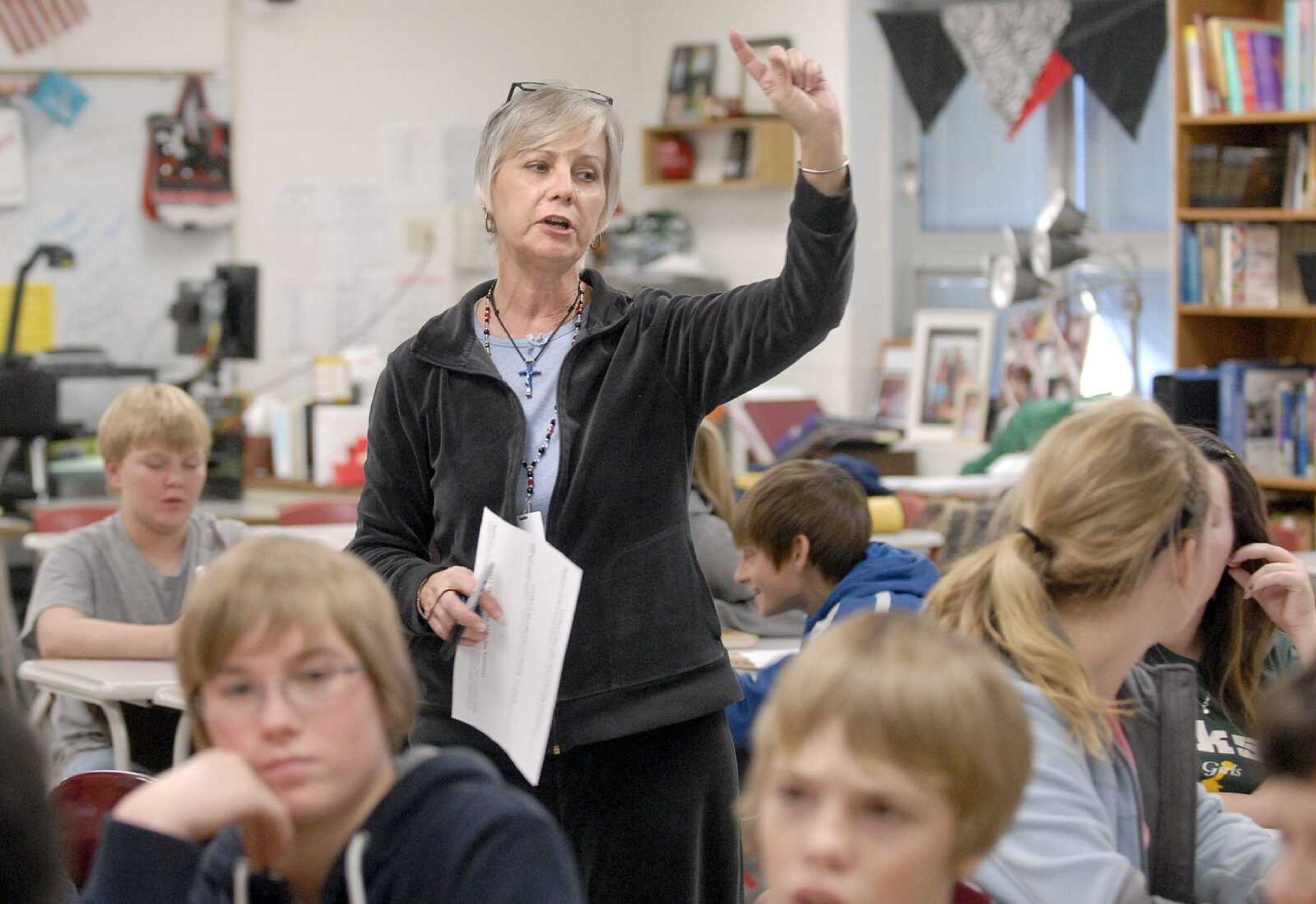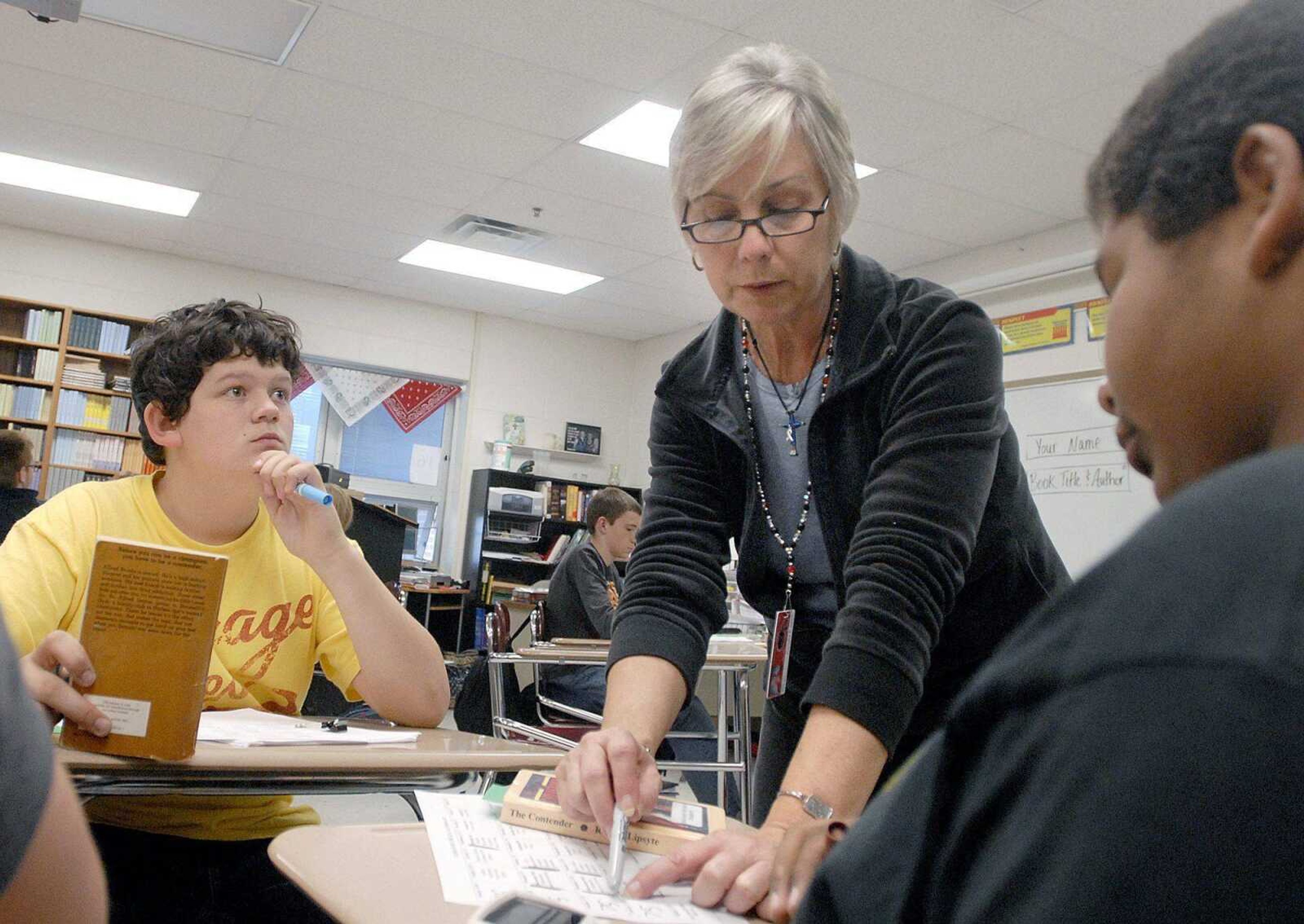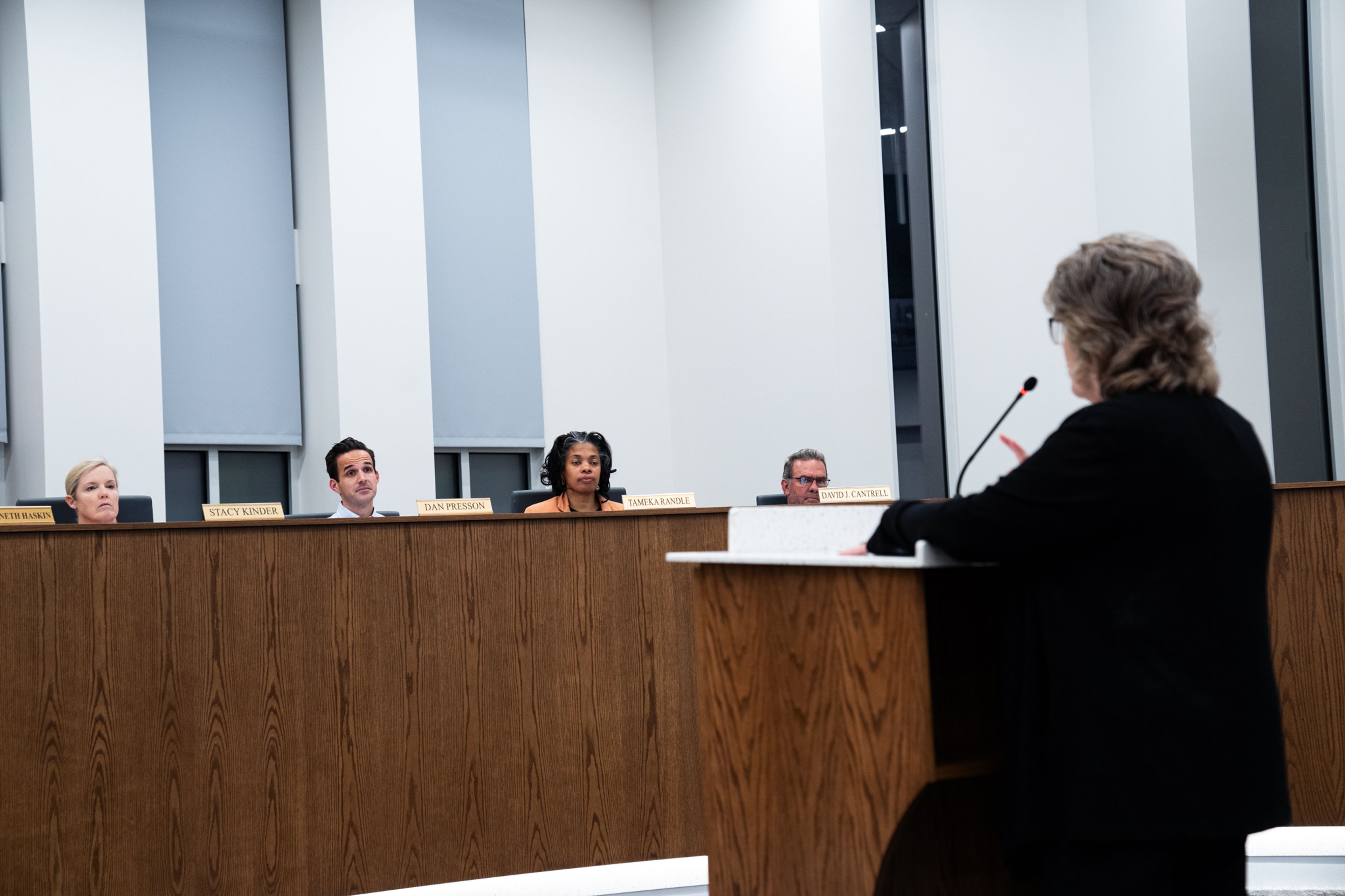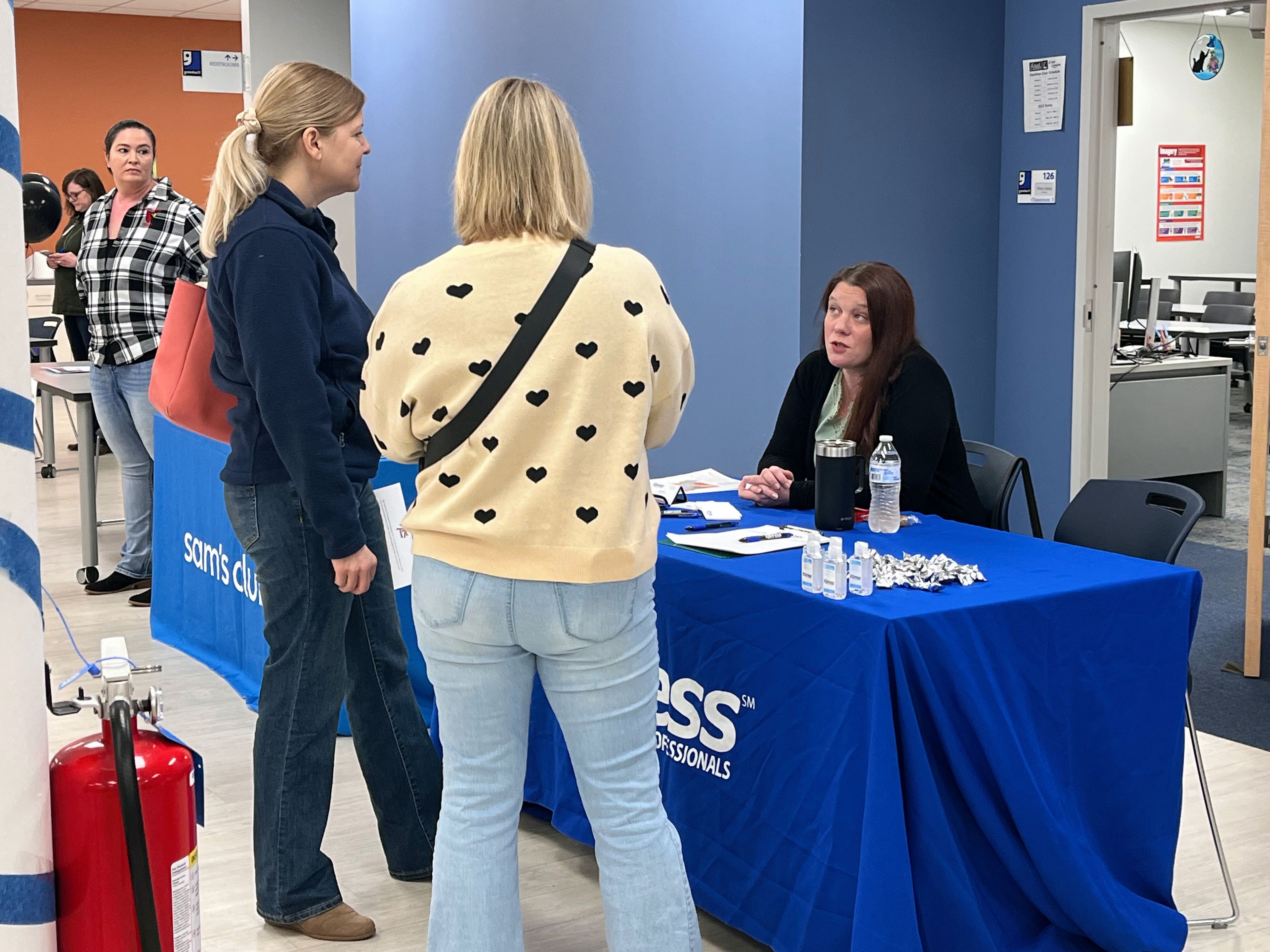Jackson has success with no-zeros education policy
Some students may not care about their grades. They'll skimp on an assignment, turning in the minimum required or sometimes nothing at all. But that just won't fly at Jackson's Russell Hawkins Junior High School. Eighth- and ninth-graders there can't receive a zero, based on a method adopted by the school as part of the ongoing implementation of Professional Learning Communities in the Jackson School District...
Some students may not care about their grades. They'll skimp on an assignment, turning in the minimum required or sometimes nothing at all. But that just won't fly at Jackson's Russell Hawkins Junior High School.
Eighth- and ninth-graders there can't receive a zero, based on a method adopted by the school as part of the ongoing implementation of Professional Learning Communities in the Jackson School District.
The junior high is in its fourth year with PLC, which according to administrators is a school culture fostered by a series of interventions to help students succeed. Foundations of PLC include constant communication between teachers, which results in instruction accommodating students at all learning levels.
The no-zeros policy was started as a pilot program in the spring and fully implemented in the junior high at the start of this year. The intervention method, also being studied by staff at the middle and high schools, is known as the ICU, or Intensive Care Unit system. The philosophy belongs to Danny Hill and Dr. Jayson Nave, two middle school educators from Tennessee. The two wrote a book in 2009 called "Power of ICU: The End of Student Apathy ... Reviving Engagement and Responsibility."
Since its introduction, the philosophy has gained popularity and sparked a change in the way many schools across the country give grades to students.

Nave came to Jackson and spoke to district staff in August during professional development training, said Dr. Rita Fisher, assistant superintendent of the district. Fisher said the premise of the philosophy where zeros are not given is that teachers do not allow students not to do their work.
"It's easier to just take the zero and go on if your intention is not to learn," she said.
All teachers in grades six through 12 will eventually use the philosophy.
According to junior high principal Cory Crosnoe, the timelines vary, but the way students are not given zeros works like this: Students who do not turn in assignments are granted an extra day but are required to fill out an information sheet called an SOS sheet as soon as it becomes apparent to them that they will miss a deadline.
Over lunch period that day, the student receives help from staff on the assignment. If the assignment is not turned in the next day, the sheet goes to a student's advisory teacher, who oversees the study period all junior high students have each day. That teacher will make sure the student does the assignment or will contact parents to make sure the assignment can be completed.
If the assignment is not completed by the end of the week, the student is added to an ICU list, which is viewed by the principal and all teachers. One teacher, known as a lifeguard, talks with each student on the list to find out why an assignment is not completed. The lifeguard also serves as a resource for students and teachers in making sure the assignment is turned in.
"But it is not hounding them," Crosnoe said. "We are concerned. Their future could be in jeopardy."
He said the ICU list fluctuates and can have 50 to 100 names from week to week, though the number steadily shrinks as they continue the program.
Once students turn in a finished assignment, it must be up to the standards a teacher set for the original assignment in order to receive a passing grade.
"It is a culture change within the building, certainly with our teachers and how they do business, and with our kids," Crosnoe said. "The kids now understand the procedures and what to do if they can't get something in. It's been positive for the kids, because they know we aren't out there trying to find where they mess up. They know instead we are there for help."
The staff had mixed feelings when the idea was introduced. Some feared students would become less responsible.
"That was definitely one of my criticisms," said Jeff Scott, a social studies teacher at the school.
Scott said he thought about the old system and how students may not have cared about their grades. He began to warm up to the idea of not giving zeros.
"In the past it's been really easy to just give them zeros when they don't do the work," he said. "Now they aren't let off the hook. They're kids. They've got to be required to do things, even when they don't act responsibly about it the first time."
Scott said he believes that if responsibility is modeled for students by teachers, they will do it on their own. "Until then, you've got to show them how its done," he said.
Crosnoe said not allowing students to receive zeros takes time and effort by all staff but that students have responded.
"A lot of them have changed their attitude to where they figure they should just do their work the first time," he said.
Crosnoe said the philosophy triggers a change in student mindset because having to do work over until it is acceptable takes time away from the student's personal life.
At the end of the first quarter this year, Crosnoe said the largest percentage of A's and a lowest percentages of D's and F's were shown on a total of 4,700 student grades than in the past 15 years.
Students cut the number of D's in half, and only two percent of grades were F's.
eragan@semissourian.com
388-3627
Pertinent address:
210 North West Lane, Jackson, MO
614 E. Adams St., Jackson, MO
Connect with the Southeast Missourian Newsroom:
For corrections to this story or other insights for the editor, click here. To submit a letter to the editor, click here. To learn about the Southeast Missourian’s AI Policy, click here.










